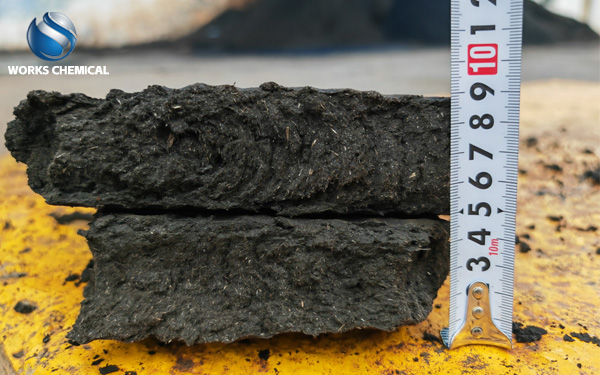
To address the issues of large dosage and high treatment costs of traditional dewatering agents for plate and frame sludge, the following technical approaches can be adopted to break through the situation. The core lies in the optimized application of sludge enhancers and process synergy:

I. Analysis of the Pain Points of Large Dosage of Traditional Pharmaceuticals
Strong dependence on chemicals: Traditional processes rely on the flocculation and coagulation-assisting effects of PAC (polyaluminium chloride) and PAM (polyacrylamide), but the organic matter content in the sludge is high and there is a lot of cell-bound water, resulting in a large demand for chemicals.
Cost structure imbalance: The cost of chemicals accounts for 50% to 70% of the total cost of sludge treatment, and excessive addition is prone to cause problems such as filter cloth clogging and prolonged filtration cycle.
Dehydration efficiency bottleneck: Traditional agents can only remove interstitial water and have limited effect on intracellular bound water, making it difficult for the water content to exceed 80%.
Ii. Technological Breakthroughs in Sludge Enhancers
Sludge enhancer is a multi-functional modified polymer product that breaks through the limitations of traditional agents:
Organic matter cracking technology
Experimental data show that sludge enhancers can reduce the specific resistance (SRF) of sludge by 40% to 60%, significantly improving the dewatering performance.
Skeleton construction effect
The inorganic mineral components in the sludge enhancer form a rigid framework in the sludge, preventing excessive compression of the filter cake during the filtration process and enhancing the porosity.
Case: After a certain sewage treatment plant used an enhancer, the thickness of the filter cake increased by 20%, and the filtration time was shortened by 30%.
Iii. Process Optimization and Cost Control
pH adjustment in advance:
Adjust the pH of the sludge to 6-7 (weakly acidic) to enhance the activity of the oxidant in the sludge enhancer and simultaneously reduce the consumption of PAC hydrolyzed aluminum.
Filter press parameter matching
Increasing the filter pressure to 1.2-1.5MPa (traditionally 0.8-1.0MPa), combined with the skeleton support of the efficiency enhancer, can further reduce the moisture content to below 60%.
Extend the pressure holding time by 5 to 10 minutes to promote the migration of bound water.
Energy recovery coupling
The filtrate was refluxed to the biochemical system to replace part of the carbon source and reduce the dosage of chemicals.
The calorific value of the filter cake can be increased by 10% to 15%. If it is used for incineration power generation, part of the treatment cost can be offset.
Iv. Comprehensive Benefit Assessment
V. Implementation Suggestions
Pilot-scale verification: Determine the optimal formula and dosage of sludge enhancer based on the nature of the sludge (for example, for industrial sludge, the type of oxidant needs to be selected specifically).
Equipment renovation: Add an online pH adjustment device and an efficiency enhancer metering pump, and optimize the feeding system of the filter press to adapt to high-viscosity sludge.
Full-process collaboration: Link sludge treatment with the sewage biochemical system, and further reduce costs through carbon source reuse and calorific value utilization.
Through technological innovation and process optimization of sludge efficiency enhancers, the dosage of chemicals, treatment costs, and moisture content can be reduced. At the same time, the potential for sludge resource utilization can be enhanced, forming a closed-loop solution for cost reduction and efficiency improvement.